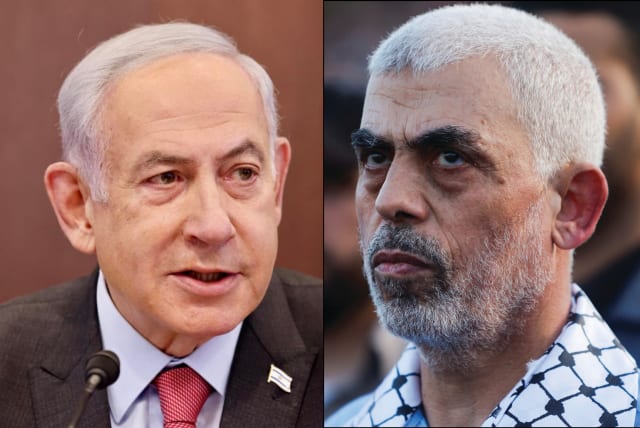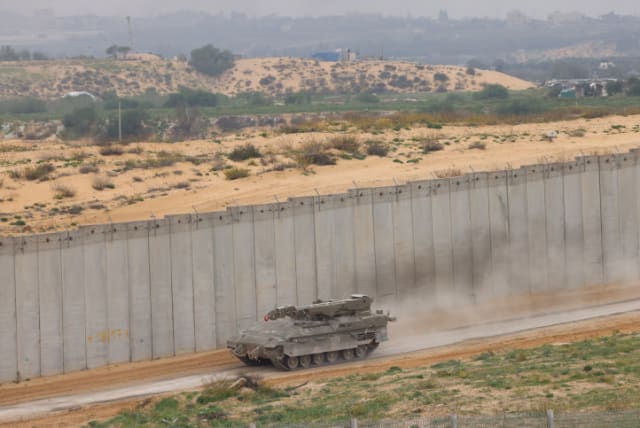

Soldiers for the Yahalom special operations unit of the IDF’s Combat Engineering Corps, along with troops from the 401st Brigade combat team, destroyed the secret underground web of tunnels seized on Wednesday by Israeli forces, the IDF said on Thursday.
The demolition of the subterranean structure followed the revelation that the IDF had taken control of Hamas’s Gaza City “senior quarter,” the IDF added. The network of tunnel branches reportedly contained apartments, offices, and living quarters of senior Hamas officials.
The tunnels led to above-ground sites in the Shejaia neighborhood's Palestine Square.
The Jerusalem Post reported on Wednesday that Hamas leaders Ismail Haniyeh, Yahya Sinwar, and Muhammad Deif had used this network to manage the organization’s operation and movement through the center of Gaza City, which has nicknamed the area “Commander’s Square.”
Colonel Beni Aharon noted that the tunnels were used to store equipment taken from civilians that could enable Hamas leadership to shelter there for an extended period of time.
Go to the full article >>A group of journalists entered southern Gaza on Thursday – in that area for the first time – including the remains of one of the homes of Hamas leader in Gaza, Yahya Sinwar.
This visit was likely the closest the media has gotten to Sinwar – and the remaining hostages were taken from Israel on October 7 – given IDF intelligence predictions that he is hiding in the tunnels of Khan Yunis with hostages nearby.
Under constant background shooting and large explosions said to be a mix of air strikes, artillery, or tank attacks, highly armored “Namer vehicles” escorted the journalists on the trip, traveling between an IDF base, the Khan Yunis headquarters of the IDF, Sinwar’s house, and a stop to get supplies. These vehicles are capable of resisting rocket-propelled grenade hits.
An IDF airstrike has turned Sinwar’s house into a crater. Another house across the street (now rubble) saw heavy fighting just two days before, according to IDF sources. Though the house was still standing, it bore signs of explosions and bullet holes throughout.
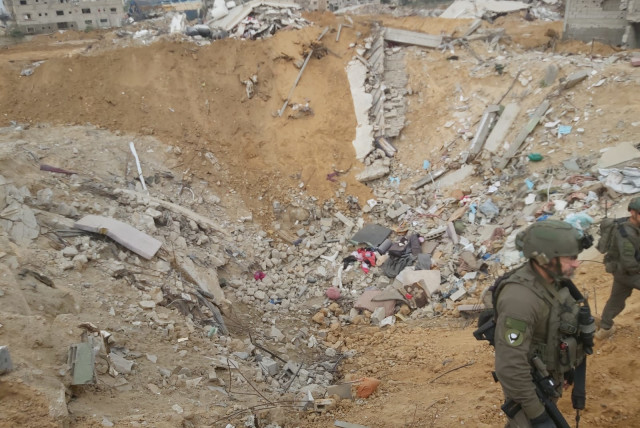
Two key IDF commanders gave The Jerusalem Post on-and-off-record updates on the status of the all-important front, which will decide the fate of Hamas, the Israeli hostages, and the war in general.
“This crate is what is left of the house,” said IDF 98th Division Commander Brig.-Gen. Dan Goldfus added that they attacked it from the air.
Goldfus said that the military made considerable progress against Hamas in three weeks of fighting in Khan Yunis.
He said the IDF’s artillery and air force undertook 1,300 attacks in Khan Yunis alone, eliminating 50% of the 150 tunnel shafts found so far, including Hamas’s head of drone warfare, head of the lookout units, and head of Nukhbeh forces in the field.
IDF Commando Commander Col. Omer stated, “We are in the heart of Khan Yunis in the neighborhood of the Sinwar family, a place viewed as the heart of terror in Khan Yunis. This area has lots of terror infrastructure, with areas for firing rockets. Many terrorists come out of here, and we are having face-to-face battles with them every day.”
“We have been fighting here for more than two weeks. We will stay to clean out the area [of Hamas],” he added.
Omer expressed confidence that his forces would succeed at the goals set for them by the government, including one particular goal: The steady and patient movement of Palestinian civilians away from the fighting parts of Khan Yunis. They said that civilians have mostly followed evacuation instructions to Al Masawi to the west, or Rafah to the south, on Egypt’s border.
The IDF has collected significant Hamas intelligence items left behind that aided the planning of future IDF operations, including one which was a classified Hamas financial report for the Khan Yunis Brigade, that details more than a million dollars spent on various items related to building their terror tunnels back in 2022.
The officials said they were relieved to receive additional reinforcements from IDF Kfir Brigade Unit 900.
Other than general pressure to squeeze Hamas out of any parts of Gaza it still controls, none of the IDF officials said they had any specific signs that they were closer to catching Hamas’s high command, or to finding and rescuing hostages.
The IDF said it destroyed 1,500 tunnel shafts this week and withstood over 22,000 attacks (as of December 10) – the vast majority against northern Gaza. These figures are impressive, but a senior IDF source suggested that the destruction of all of Khan Yunis’s tunnels could take years to frame southern Gaza as still being very much mid-operation.
All indications are that the battle for Khan Yunis, as much as it is progressing in serious ways, could easily extend into “Stage 3” of the war – months past when the “main war” is expected to end by January 31.
Some of this can be attributed to the vast amount of time it took to move civilians out of harm’s way. Another reason is that Hamas’s top officials have less of a place to flee to from Khan Yunis the same way they could from northern Gaza, while another reason is that Khan Yunis Brigade chief Rafa’a Salameh and his commanders are considered among Hamas’s toughest.
Goldfus’ 98th Division has lost around 90 soldiers since October 7, 20 lost during the ground invasion.
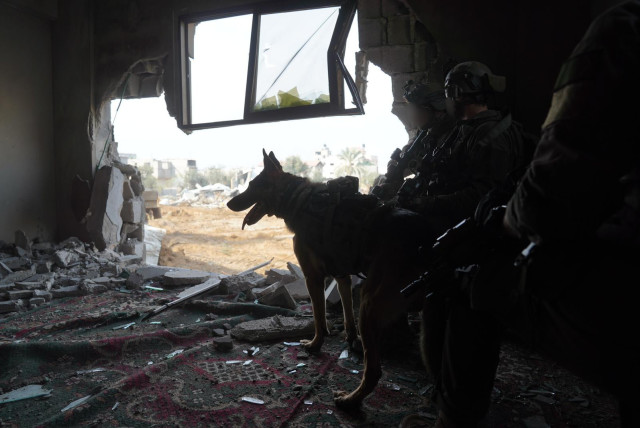
The IDF said particular progress was noted specifically in eliminating lookouts and against general Hamas morale. One example of this is that in the last week, the IDF said it saw fewer Hamas counterattacks than in the first two weeks of December.
In Khan Yunis, IDF sources suggested there was much more work to do on Hamas’s tunnel network and command structure. Goldfus said, “We are fighting with the enemy from location to location both above ground and below ground. The enemy built generally in Gaza – especially in Khan Yunis – a substantial tunnel network to fight us, to survive [our attacks], to move from place to place [unseen by the IDF]. We are forcing them out to fight them, and are destroying the [Hamas] infrastructure above and below ground.”
Military sources described facing four distinct kinds of fighting in different geographic landscapes of Khan Yunis. In small village areas, most attacks are from underground, as in where suddenly several Hamas forces emerge with rocket-propelled grenade launchers.
In agricultural areas, the IDF faces many more improvised explosives, while in built-up more urban areas, the IDF is being confronted with anti-tank missiles guided by lookouts, though Khan Yunis does not have as many buildings or as many very high buildings as Gaza City (at most, a small number of 12-floor buildings).
In Bani Suheila, a neighborhood in eastern Khan Yunis, the IDF has faced drone and rocket attacks, and more group counterattacks in general.
In another area, the IDF faces much more intense face-to-face fighting.
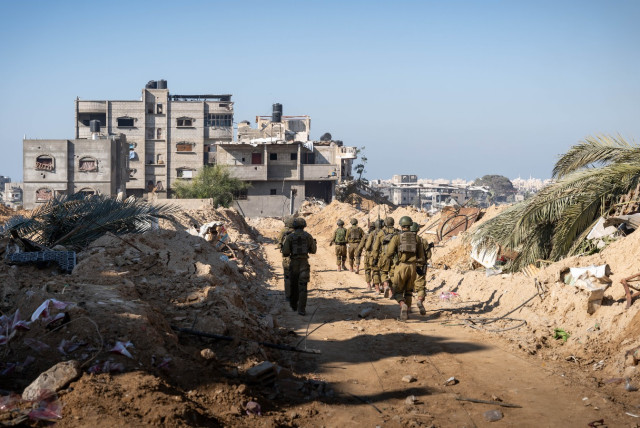
The IDF is also using information warfare to inject a wedge between the general Gazan population and Hamas, Goldfus explained. The name in Arabic for the informational warfare campaign refers both to “opening the gates of hell” for Hamas as well as “a new horizon” for Palestinian civilians.
Standing over the crater of what was once Sinwar’s house, Goldfus inverted an Arabic Hamas slogan for Hamas bringing a “deluge” of terror to Israel on October 7 into Arabic along the lines of “all that is left you is sand.”
Go to the full article >>Is Israel’s entire strategy to recover the hostages from Hamas based on a false assumption? A visit to Khan Yunis on Thursday helped crystallize something that had been alluded to by a few Israeli political and defense officials.
To wit: Perhaps Israel thinks it can surround Hamas leader Yahya Sinwar to the point where he believes his choices are to either cut a hostage deal – including an end to Hamas’s rule – in exchange for his life, or he can die a martyr while taking some hostages with him?
This question is at the heart of Israel’s strategy, and it is not clear that there is a Plan B for what to do if Sinwar is ready to die.
If he is, it would seem that Israel’s only two remaining choices would be to either cave into Hamas’s demands to halt the war – without dismantling it – or launch a military operation to rescue the hostages, which could miraculously succeed or end in tragedy.
There is, though, a third option: Continue the war long enough to take control of nearly the entire Gaza Strip, except for where Sinwar is hiding, declare the “main war” completed, and start an extended game of chicken for an indefinite period to wear Sinwar down.
But that strategy relies on an important premise: that Sinwar will eventually choose to live and will not agree to die a martyr.
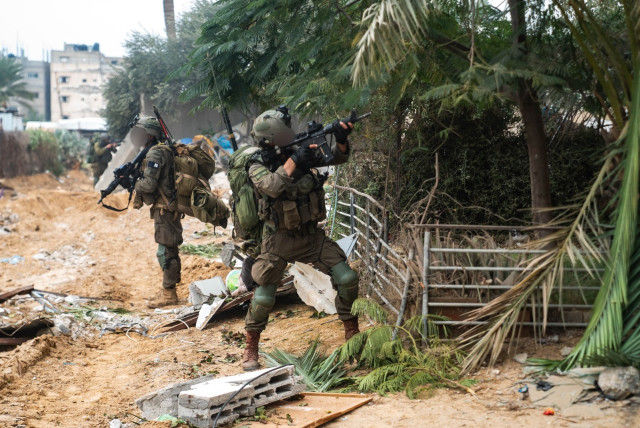
There is evidence that Sinwar wants to live. If he were aching to be a martyr, he might have stayed, fought, and held the line at one of the key Hamas sites in Gaza City in northern Gaza in mid-November.
Instead, we know that at some point, Sinwar fled to southern Gaza to live another day.
It is also possible that the last and current round of negotiations over hostages shows his rationality as an actor.
He was willing to give 81 hostages back to Israel to get a breather and angle for a ceasefire, something that someone who simply wants to die a “glorious” martyr would not have done.
Even as Sinwar rejects Israel’s offers for more hostage deals, he continues to express an openness to returning more hostages, as opposed to rushing to die in the battles at Khan Yunis.
But all of these judgments may be mistaken, just as Israel misjudged Sinwar for years, leading up to the surprise attack he coordinated on October 7.
For years, Israeli intelligence viewed him as a lightweight who was afraid to get into any significant fights and mostly wanted to hold control of Gaza, with all its limitations.
In 2018, when Sinwar pushed the strategy of mixing nonviolent border protests with low-grade violent attacks on IDF guards, Israeli intelligence viewed him as willing to use less-daring tactics to achieve geopolitical goals – all without risking too much.
Each time Israel fought Palestinian Islamic Jihad, and Hamas stayed out of the fighting, Israeli intelligence concluded that Sinwar was extremely deterred from taking the risk of angering the IDF too much.
October 7 completely shattered that paradigm.
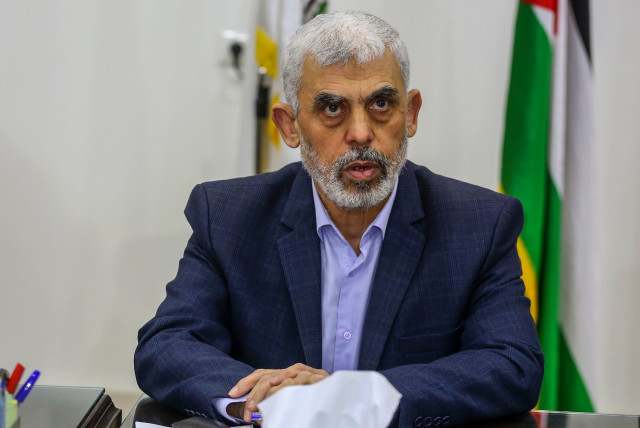
Israeli intelligence started to talk about him as a pernicious, pathological liar, a megalomaniac who was willing to take risks to place his stamp on the history of Palestinian terrorism against the Jewish state.
Yet, even after Sinwar’s brilliantly concocted October 7 plans and his years of fooling Israeli intelligence and luring Jerusalem into complacency, almost every Israeli defense official still views him as a mostly rational actor.
They say he misjudged Israel and never thought that the “spoiled” Israelis of 2023 would be ready to fight a deep and bloody war in the heart of Gaza. Yet they have.
Had he known that the IDF would do to Gaza what it did, he would never have ordered the invasion or would have modified the plans to try to mitigate Israel’s fury, they say.
What if he gambled on October 7 because he would rather die a martyr and fight a bloody war, killing many Israelis, including many hostages, than remain a weak-looking ruler of a weak Gaza in a mostly undeclared extended ceasefire with the Jewish state?
What if the only reason he made the original hostage deal was in the hope that it would force the IDF entirely out of Gaza, and that this is his final negotiation position?
What if negotiations are destined to fail – unless Israel changes its premise of who Sinwar is and how far he is willing to go?
Maybe he is only willing to cut a deal that lets him control Gaza and hold onto the victory of October 7. Or perhaps he would rather die.
If anything can be gleaned from Khan Yunis, it is that there is still some time before this issue reaches its peak. But as the IDF continues to make progress, not much more time is left.
Go to the full article >>The IDF demanded that residents of Israel’s north return the weapons in the possession of their emergency standby squads, the head of the Upper Galilee Regional Council claimed on Thursday.
"The Israeli government has betrayed the country,” the council head said. “No one there remembers who fought bravely on October 7, and once again, those who live on the front lines are being abandoned."
The council head asserted that the IDF commander of the Hiram district sent a letter to all the regional and local councils in Upper Galilee containing an order to return the weapons of the emergency standby squads.
Reportedly, the only exceptions to the disarmament injunction are the weapons in the possession of the commanders of these squads and those communities close to the border fence. The regional councils that have been told to return their arms are the Upper Galilee, Merom Hagalil, and Hermon.
The local councils that reportedly received the order are Hatzor Haglilit, Yesud Hama’ala, and Rosh Pina.
“This conduct as if the war has ended, disbanding emergency standby squads in some settlements in the Upper Galilee could cost lives. Not only has the war not ended, it is intensifying, and one only needs to check the recent events to understand this," the Upper Galilee Regional Council head added.
The regional council noted that the council head has appealed to the commander of the Northern Command, the Home Front Command, and the defense minister to act to stop the collection of weapons.
The IDF must complete its mission to destroy Hamas, Prime Minister Benjamin Netanyahu said Thursday as he pushed back on pressure to stop the war, while third-party talks for a second hostage deal appeared to falter, with both Israel and Hamas at odds over a ceasefire.
"We are fighting until victory. We will not stop the war until we achieve all of its goals: Completing the elimination of Hamas and releasing all of our hostages,” Netanyahu stated in a video message he released.
“The choice I propose to Hamas is very simple: Surrender or die. They do not have – and will not have – any other choice,” he stressed.
“And after we eliminate Hamas, I will use all my power to ensure that Gaza never again threatens Israel – neither Hamastan nor Fatahstan,” he added.
It’s one of several messages Netanyahu has released this week as Egypt and Qatar have held separate talks with Hamas and Israel to advance a deal to secure the release of 129 hostages in Gaza.
Go to the full article >>Hamas released a video on Thursday of three hostages killed in Hamas captivity and who had their bodies recovered by the IDF from the Gaza Strip last week.
In the video, the three hostages – Elia Toledano, Nik Beizer, and Ron Sherman, are seen holding up pieces of paper with their names and personal information.
In a statement posted alongside the video, Hamas claimed that "they tried to keep them alive - but Netanyahu insisted on killing them."

The video then adds visual effects of shots and animated blood. They are shown in captivity smiling and speaking to each other.
The three were taken captive during the October 7 massacre against southern Israeli communities.
Go to the full article >>An IDF special forces combat team of the LOTAR unit conducted operational activities in Gaza for the first time, the IDF stated on Thursday.
The IDF added that the LOTAR team employed its infiltration, sabotage, and sniping capabilities during their activities.
The combat team, operating in the north Gaza city of Beit Hanun, observed a terrorist emerging from a tunnel before firing a burst of shots at the Israeli forces.
The IDF noted that, suspecting the attack was an attempt to lure them towards explosives planted in the area, the troops threw grenades and eliminated the terrorists without approaching.
The LOTAR soldiers subsequently demolished the tunnel shaft.
Additionally, soldiers of the 188th Brigade engaged a squad of terrorists in close-quarters combat in a subterranean shaft beneath a Shejaia school.
The terrorists reportedly attempted to ambush the IDF troops with explosives. In response, the soldiers eliminated the Hamas fighters with the aid of tank fire and drones.
Go to the full article >>In the wake of the October 7 Hamas massacre and Israel's subsequent war against Hamas in Gaza, the Anti-Defamation League (ADL) has released a report highlighting the prevalence of hateful antisemitic conspiracy theories and tropes in political cartoons published in the Arab press.
The report painted a troubling picture of the use of these offensive themes, which have gained momentum since the start of the war. The ADL's assessment delved into the political cartoons featured in numerous newspapers across the Middle East, including those published in Arabic-language newspapers in the United Kingdom. The findings revealed the widespread use of hateful antisemitic tropes, including the unfounded claim that Jews control US politics, comparisons of Israel and its leaders to Hitler, and frequent references to the blood libel – a baseless accusation that Jews consume the blood of their victims as part of a perverse religious ritual.
The report, titled "Antisemitism in Arab Cartoons During the Israel-Hamas War," unearthed numerous instances of blatant antisemitism prominently featured in highly circulated newspapers and websites across the region. These offensive depictions were found in publications from Bahrain, Egypt, Jordan, Kuwait, Libya, Morocco, Oman, the Palestinian Authority, Qatar, and Saudi Arabia.
Go to the full article >>The foreign minister of the United Arab Emirates Sheikh Abdullah bin Zayed met a senior Palestine Liberation Organisation (PLO) official in Abu Dhabi to discuss the humanitarian crisis in Gaza due to the escalating conflict, state news agency WAM reported on Thursday.
The meeting with Hussein Al-Sheikh, Secretary General of the Executive Committee of the PLO, focused on g international efforts aimed at reaching an immediate ceasefire.
Go to the full article >>Jordan's King Abdullah told French President Emmanuel Macron on Thursday that Israel's "continued aggression" against Gaza would have "catastrophic repercussions" on the region, the palace said in a statement.
King Abdullah also said the world should pressure Israel to end its military campaign in Gaza and lift obstacles to much needed aid to around two million Palestinians in the enclave, where hunger and disease were spreading fast.
Go to the full article >>